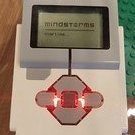
Micropython can it list to file, and backwards?
By
Mr Jos, in LEGO Technic, Mindstorms, Model Team and Scale Modeling
-
Recently Browsing 0 members
No registered users viewing this page.

By
Mr Jos, in LEGO Technic, Mindstorms, Model Team and Scale Modeling
No registered users viewing this page.